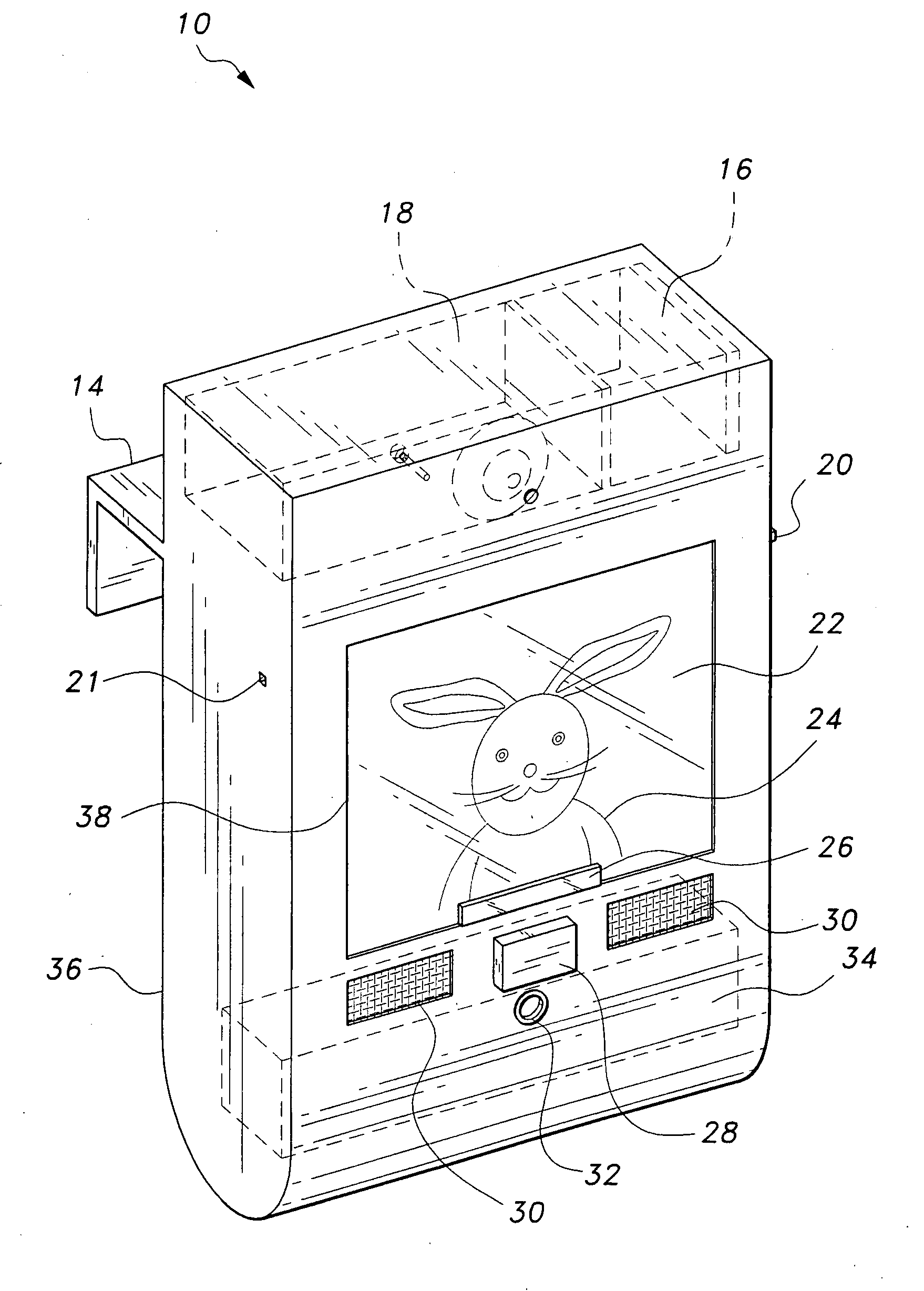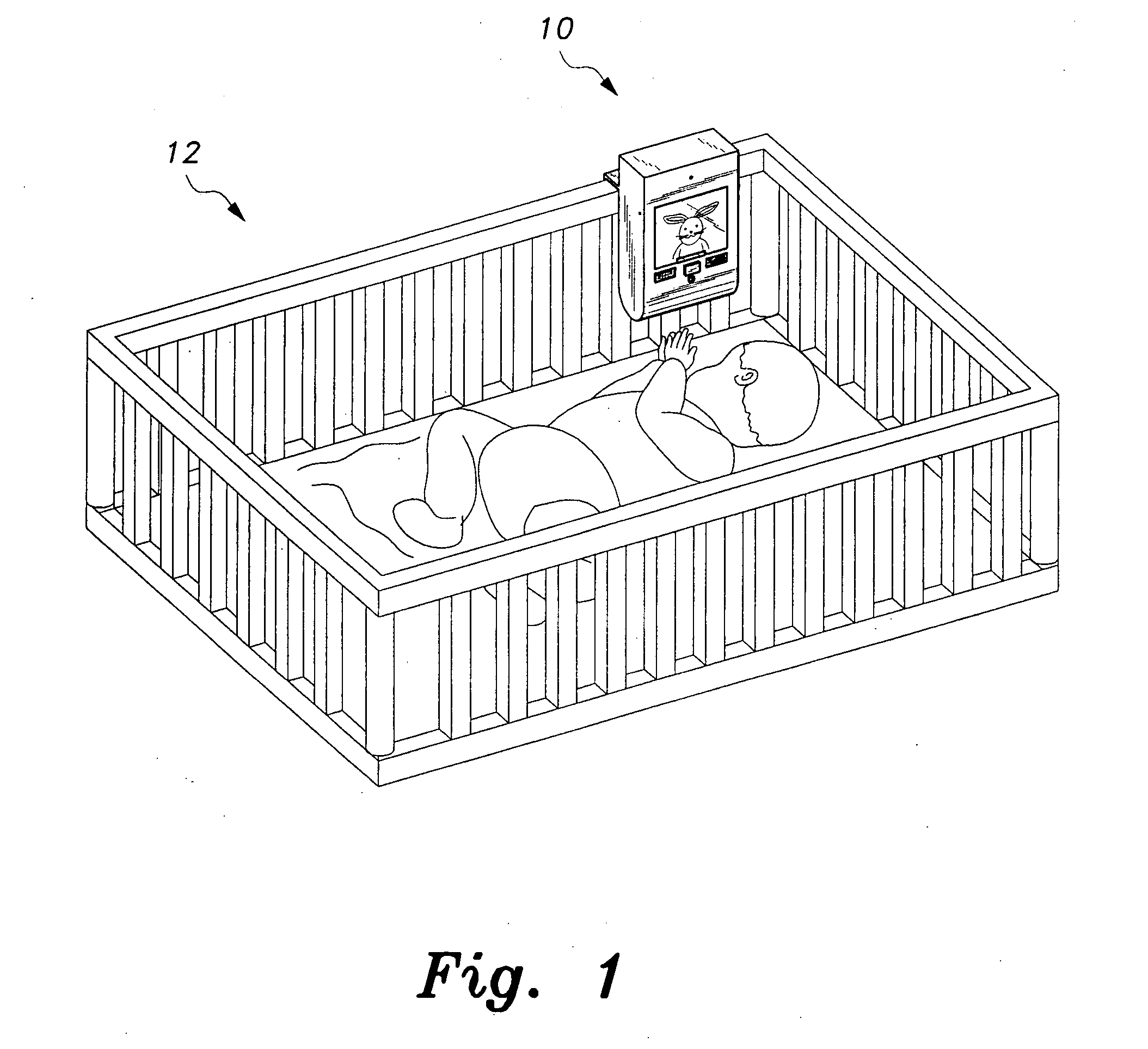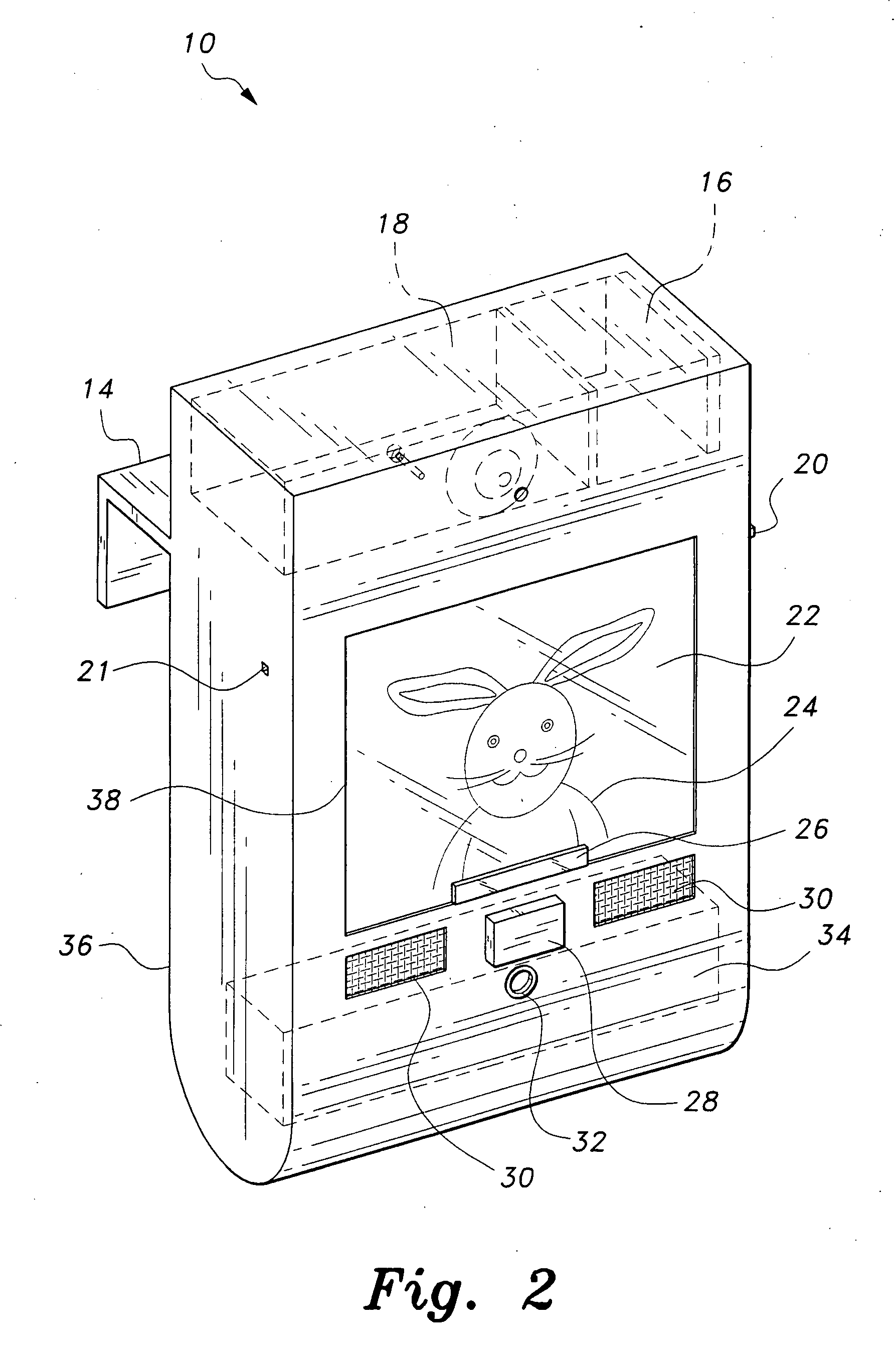Sensory stimulation device for child
a sensory stimulation and child technology, applied in the field of electronic audiovisual devices, can solve the problems of not being able to generate the same reaction in a child or infant, preventing parents or other caregivers from controlling the particular stimulus delivered to the child, and not providing much programmable functionality or variety
- Summary
- Abstract
- Description
- Claims
- Application Information
AI Technical Summary
Benefits of technology
Problems solved by technology
Method used
Image
Examples
Embodiment Construction
[0021]The present invention is directed towards a sensory stimulation device 10, which provides a child or infant with user-controlled and programmable aural, visual and olfactory stimulation. As illustrated in FIG. 1, device 10 is adapted for mounting within crib 12 in a manner that will be described in greater detail below, with specific reference to FIGS. 2 and 3. It should be understood that device 10 may be mounted exterior to the crib, and may further be mounted on any suitable support surface, including, for example, the floor, a wall, on a table or the like. The lower wall of housing 36 may have an angled or beveled edge, allowing the housing 36 to be supported on a horizontal surface in a manner similar to a conventional picture frame when mounted exterior to the crib. A separate releasable support may further be provided for use in combination with housing 36, allowing housing 36 to be mounted on a horizontal surface, such as a tabletop. Housing 36 may further be provided ...
PUM
 Login to View More
Login to View More Abstract
Description
Claims
Application Information
 Login to View More
Login to View More - R&D
- Intellectual Property
- Life Sciences
- Materials
- Tech Scout
- Unparalleled Data Quality
- Higher Quality Content
- 60% Fewer Hallucinations
Browse by: Latest US Patents, China's latest patents, Technical Efficacy Thesaurus, Application Domain, Technology Topic, Popular Technical Reports.
© 2025 PatSnap. All rights reserved.Legal|Privacy policy|Modern Slavery Act Transparency Statement|Sitemap|About US| Contact US: help@patsnap.com



